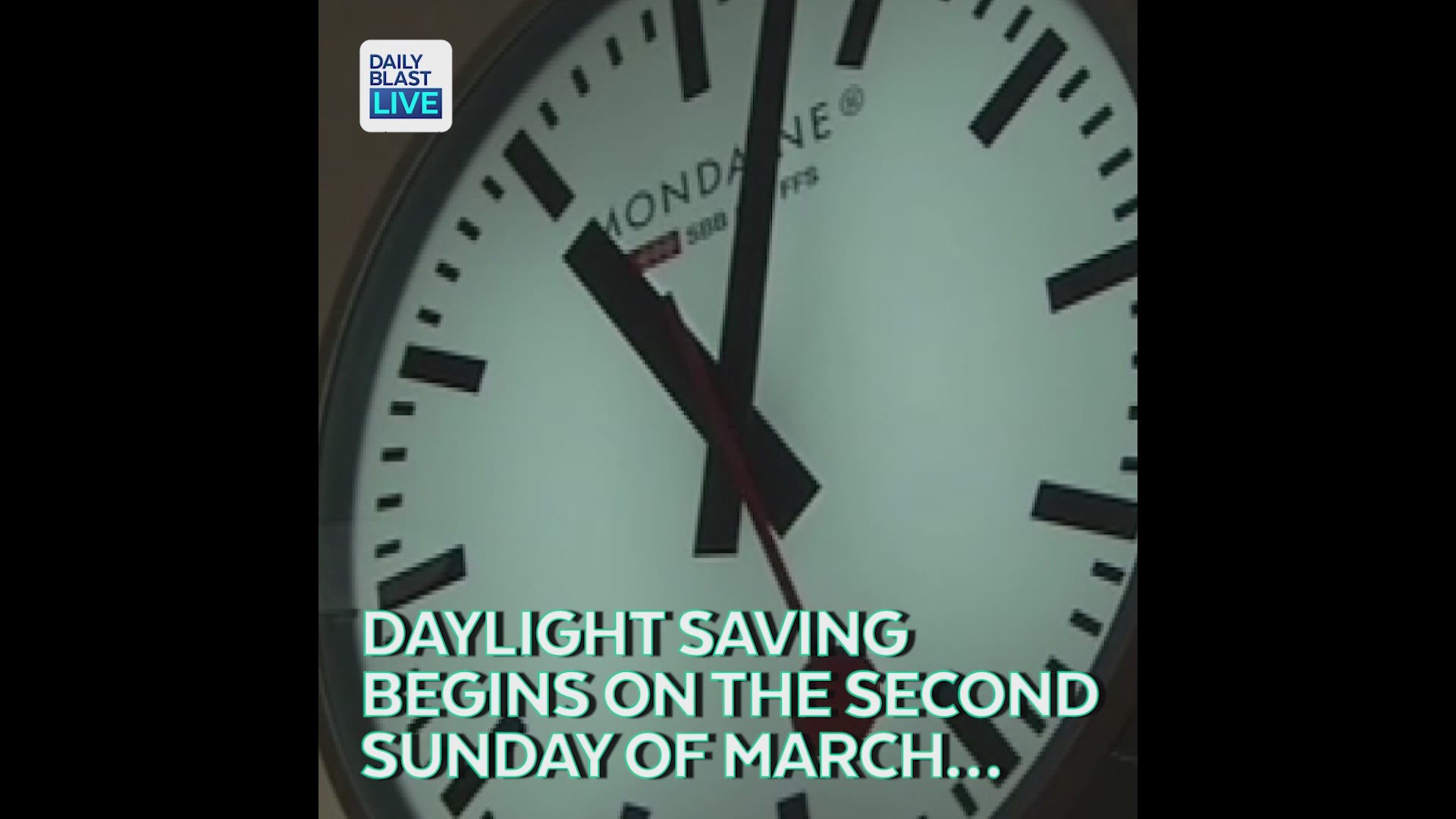On March 11, 2018, at an ungodly hour when almost no one is paying attention, the vast majority of Americans will lose an hour of sleep as the country sets clocks ahead for daylight-saving time.
And at 2 a.m., when those clocks officially change, Arizona and Hawaii will remain in peaceful slumber because they decided long ago they're just not up for saving daylight.
This year, Arizona celebrates its 50th anniversary of shunning DST. In 1968 the state Legislature voted to opt out of the Uniform Time Act that mandated daylight-saving time, a move that pushed sunset to a later hour. That was just not going to fly in a state where triple digits go on for months and residents wake up rooting for sunset.
Arizona may be the 39th-best state according to the latest rankings by U.S. News & World Report, but we are No. 1 when it comes to clock-based common sense.
Not that Arizona doesn't feel the effects of disturbances in the time-change continuum.
How daylight-saving time affects Arizona
• Arizona will be three hours behind New York, two hours behind Chicago, an hour behind Denver and the same time as Los Angeles.
• Sporting events outside Arizona will start an hour earlier, a welcome change when NCAA's March Madness rolls around (though inconsequential for baseball because who outside of sports reporters watches to the end?).
• Shows will start earlier on some cable TV networks. AMC’s “The Walking Dead,” for example, lurches back to 9 p.m. Sundays from 10 p.m., making it available to a younger audience for which it is completely inappropriate.
• More importantly for Arizona, the sun will set at its normally scheduled time, though in summer it's always way-too-late-thirty. If DST were enforced, the sun would stay up until 8:42 p.m. around the summer solstice, past the bedtime of the average Baby Boomer.
Daylight-saving facts
• Daylight saving was ostensibly started to save energy, but it turned out people enjoyed having an extra hour of daylight after work. But not in Arizona, where sunlight only extends the heat-related misery.
• The Navajo Reservation observes daylight-saving time, the Hopi Reservation does not. The Navajo Reservation surrounds the Hopi Reservation, so if on Monday you drive from Flagstaff to Gallup through Tuba City and Ganado, you'll change time on four occasions.
• Western Indiana used to be even more confusing as some counties and cities observed daylight saving while others did not. The Energy Policy Act of 2005 put an end to that foolishness, leaving Arizona as the only two-timing state, so to speak.
• Be happy that in 1905, the British roundly ignored builder William Willett's proposal to push clocks ahead 20 minutes each Sunday in April and roll them back in similar increments in September.
• The first use of daylight saving dates to July 1908 in Port Arthur (now Thunder Bay), Canada. Despite the commercial possibilities, the city holds no daylight-saving parades nor sells "Birthplace of DST" shot glasses.
• The U.S. first adopted daylight-saving time, called "Fast Time," in 1918 in support of the war effort. It was repealed seven months later.
• On Feb. 9, 1942, Americans set their clocks an hour ahead and kept them there until Sept. 30, 1945. It was officially War Time, with zones reflecting the change (Arizona, for example, was on Mountain War Time).
• China may or may not manipulate its currency, but it does mess with the clock. Though spread over five time zones, China recognizes only one, Beijing time. It is supposed to promote unity, but tell that to those who live in the far west when the summer sun sets as late as midnight.
• If the U.S. observed the one-time-zone policy (Washington D.C. time, of course), the summer sun in Arizona would set as late as 10:42 p.m. and weather-related crankiness would hit an all-time high.
• In 1991 and again in 2014, a few lawmakers floated the idea of having Arizona join the daylight-saving parade. Republicans and Democrats were united in their rejection of such a proposal, offering brief and shining moments of true bipartisanship.
• Massachusetts officials considered moving the state into the Atlantic Standard Time Zone from the Eastern Time Zone. In effect, Massachusetts would be an hour ahead of the rest of New England, effectively adopting DST year-round. The change, however, is unlikely to happen.
• In 2016, a measure to abolish daylight-saving time in California fizzled. In 2017, California legislators shelved a bill that could have moved the state to DST year-round.
• According to Time Zone Report, which tracks legislative attempts to alter DST, 24 states had bills introduced last year to lengthen or abolish the time change. None were passed.
•Daylight-saving time could be harmful to your health. A 2014 study led by the University of Michigan Frankel Cardiovascular Center found the number of heart attacks goes up 24 percent on the Monday following the spring-forward. One theory is that the increased risk may be linked to that lost hour of sleep.
• More than 70 countries observe daylight-saving time. No one is sure just how much daylight is saved, globally, each year, though physics indicates none.
• It is daylight-saving time, not daylight-savings time. So it is decreed by those who spend inordinate amounts of time policing words.

